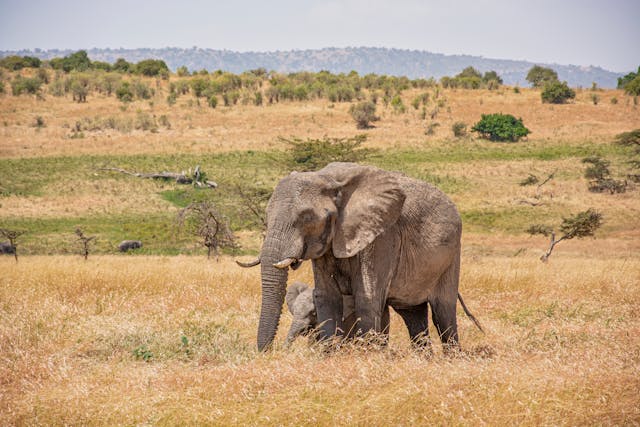Planning a safari, beach holiday, or Kilimanjaro climb in Tanzania? Understanding Tanzania’s weather and climate will help you choose the perfect time to travel. The country experiences two dry seasons and two rainy seasons, and while climate change has made patterns less predictable, these general guidelines will help you plan your adventure.
Tanzania’s location near the equator gives it a tropical climate with regional variations. Northern Tanzania generally has milder conditions, while the southern regions are hotter and drier. Coastal areas, including Zanzibar, are warm and humid year-round. In higher altitudes, such as the Ngorongoro Highlands and Mount Kilimanjaro, temperatures are cooler during the day and can drop significantly at night.
Unlike many parts of the world, Tanzania does not have a traditional summer or winter. Instead, it alternates between rainy and dry seasons:
This period is hot and sunny, with excellent visibility for diving and snorkeling along the Zanzibar coast. In the Serengeti, it’s calving season for wildebeest, attracting predators and offering dramatic wildlife action. Migratory birds also flock to Tanzania, making this an incredible time for birdwatchers.
Heavy afternoon rains dominate this season, especially in April and May. Safari lodges in the north remain open, but some southern camps may close. The wildebeest begin their mating season and start moving northward. While trekking Kilimanjaro is challenging due to muddy trails, the landscapes are lush and vibrant.
This is the peak safari season. Wildlife gathers around rivers and waterholes, and the Great Migration brings wildebeest and zebras across the Serengeti. July and August are prime months for river crossings at the Mara River. Parks such as Tarangire and Ruaha are alive with elephants, while chimpanzee trekking in Gombe is at its best. September and October are also great for Zanzibar beach escapes and turtle hatching events.
Rain comes in brief afternoon showers that refresh the landscapes without disrupting safaris. December marks the arrival of migratory birds and the chance to dive with whale sharks along the coast. It’s also a magical time for festive-season travel, with green scenery and fewer crowds compared to the high season.
Southern Tanzania experiences longer rainy seasons than the north. Here, the dry season runs from June to November, followed by heavy rains that can last from December through March. April and May still see showers but are less intense. Some lodges in the south close during the wettest months, so advance planning is essential for safaris in Ruaha, Nyerere, and Selous.

If you plan to travel during the busy high season, consider exploring Tanzania’s southern parks such as Nyerere National Park. These hidden gems offer exceptional wildlife viewing with far fewer tourists than the northern circuit. The Rufiji River becomes a wildlife magnet, attracting elephants, lions, buffalo, and rare species such as wild dogs and sable antelopes. For a truly authentic safari, combining the Serengeti with a niche southern park gives you the best of both worlds.
The best time to visit Tanzania is during the dry season, from June to October, when wildlife viewing is excellent and the weather is pleasant. The short dry period in January–February is also ideal for beaches and coastal activities.
Tanzania doesn’t follow the traditional summer and winter pattern. Instead, it has two rainy seasons (short rains in Nov–Dec and long rains in Mar–May) and two dry periods (main dry season Jun–Oct and short dry Jan–Feb).
Coastal regions like Zanzibar are hot and humid year-round, with temperatures reaching 30–35°C (86–95°F) in the hottest months. Inland areas like the Serengeti and Ngorongoro Highlands have milder temperatures, around 20–30°C (68–86°F).
The Great Migration typically occurs from June to October in the Serengeti, with river crossings at the Mara River usually happening in July–August. Calving season happens around January–February.
Temperatures on Kilimanjaro are cooler year-round. Daytime can be mild, but nights are cold, especially at higher altitudes. The best climbing conditions are during the dry season (June–October and Jan–Feb).
Yes, most northern parks remain open during the long rains (March–May), but southern parks may have some lodges closed. Heavy afternoon rains may make trekking more challenging but offer lush landscapes and fewer tourists.